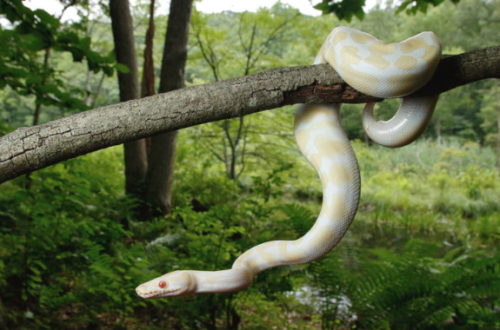
Benefits of Feeding Frozen Rodents and Feeding Tips
Feeding rodent-eating reptiles can be tricky and not always a pleasant experience for soft-hearted owners. Those little mice and rats are stinking cute! Or, you could have the opposite feelings and find them disgusting vermin. Either way, you’re not really happy with the task of buying, handling, and feeding a live rodent to your scaly pet. You might have tried frozen snek snacks from a pet store, but your snake decided thawed rat was not appealing. Let’s discuss why frozen is a good choice and how to help your picky friend make the switch.
Why is frozen a better choice?
Feeding live prey items comes with some risk and difficulties. First, you have to find one. Pet stores often run out or low of live stock, meaning your snake might have to miss a meal. Transporting the live rodent poses a risk of escape in your car or in your home. If it’s not a friendly critter, you could get bit handling it or peed on… If you’re not keen on touching it, getting the rat or mouse in your snake’s enclosure without it escaping is a trick.
Then, what if your snake doesn’t want it? If you leave it in there more than 5-10 minutes, it could attack and bite your snake. We’ve gotten snakes in for rehab that had new and old bite scars from rodents. If your snake doesn’t get a good strike and wrap on it, the rodent could bite your snake before it’s unconscious.
When you do manage to get the live rodent out of your snake’s enclosure after he’s refused his meal, now what do you do with it? If you keep it more than a week, it’s going to grow and might get too big for your snake to eat. If it’s young, it won’t likely survive without a mom for more than a day or two. The pet store isn’t likely to take it back. Turning a domestic animal loose outside to fend for itself is extremely inhumane and illegal in most states. What a nightmare.
Buying frozen rodents allows you to stock up on the correct size food for your snake. On feeding day, you simply visit your freezer for the meal. If your snake doesn’t eat it, you can just toss the rodent in the trash or on your compost pile (check with local ordinances on disposing of dead animals). You don’t want to refreeze it and try to feed it again, though. That isn’t healthy for your snake.
Frozen rodents are usually more affordable as well. Which means you can afford more snakes!
Where do you get frozen rodents?
Most pet stores will carry them. You can order online from frozen prey suppliers as well. There are plenty out there, though shipping is not cheap. You can go in with some friends on an order to help split shipping charges, or look for a local rodent breeder who also does frozen (like us!).
Ok, how do I do this thing then?
Here are some steps on properly feeding frozen rodents or other prey items.
1. Thaw out the rodent.
We like to put ours in a bath of room temperature water. You can also thaw in the fridge if you want to get your rat out in the morning or the night before.
2. Warm it up, slowly!
Hot water from your faucet works great or you can use a hairdryer. The rodent should be warm all the way through, which takes some time with a hairdryer. Use your IR Temp Gun to check the rat’s head. It should be 100-110F.
3. Offer it to your snake.
Use rubber-tipped tongs (we like kitchen tongs) and do a little dance with it. If your snake won’t take it after a minute or two, heat it again and just leave it on the warm side of the enclosure.
Tips for Picky Snakes
1. Warm the rodent in water to a temperature of about 110°F and dry it off before offering it to the reptile. Use a hairdryer to really heat up the rodent’s head.
2. Place the thawed rodent in dirty bedding from live rodents to make it smell more like a live rodent.
3. If the snake seems afraid of the prey, leave it on the warm side of your enclosure and do not disturb your reptile after putting the thawed rodent in the cage. Cover the front of the cage and do not look into it for at least an hour.
4. Feed sun-loving reptiles in the middle of the day. Feed nocturnal or crepuscular reptiles, like most snakes, at sundown or in the early evening. Turn off the lights in the room.
5. Some reptiles may need “fresh killed” rodents for a few feedings before making the switch to thawed frozen rodents.
6. Never re-use an uneaten rodent. Not only does it spread disease, but the process of thawing and refreezing can cause the rodent to become rotten and unwholesome to eat.
Some reasons your snake might not take a thawed rodent.
1. Incorrect environmental conditions (check out our article on housing your Ball Python for tips on improving your setup)
2. Feeding too often. Feed most young snakes weekly and older snakes every two weeks.
3. Incorrect food item size.
4. Your snake may prefer prey items of a different species (odor cues – mice vs. rats vs. African soft-furred rats vs. gerbils vs. quail chicks). Try getting some mouse bedding to scent your rat.
5. Reptile is about to shed its skin.
6. Illness.


